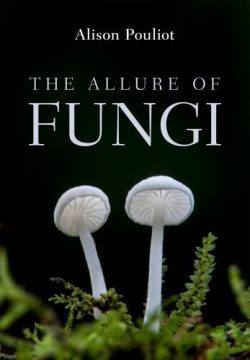Alexis Harley at The Sydney Review of Books:
 As Nicholas Money puts it in Mushrooms: A Natural and Cultural History, thinking of the mushroom in place of the whole mushroom-forming organism is ‘a bit like using a photograph of a large pair of testicles to represent an elephant’. (The flaw in this memorable comparison is that the spore inside a mushroom is ready to grow into next-generation fungus, so long as it’s launched into congenial conditions, whereas an elephant sperm cell only contains half the chromosomes needed to begin a baby elephant.) Like the testicle, the mushroom is just one component of an organism, relatively peripheral to the organism’s viability, if essential to the continuation of its species. Unlike the elephant testicle (and hence the force of Money’s comparison), it is the part of the organism to which human cultures have in general paid the most attention. It’s this spore-disperser, not the hard-working mycelium, that we might consider dining on, illustrating, ingesting for hallucinatory or medicinal purposes, founding a taxonomic system around, deploying in the assassination of an unlikeable Roman emperor, or photographing on our nature rambles. It’s what appears in the field guides, the cookbooks, and the mythologies.
As Nicholas Money puts it in Mushrooms: A Natural and Cultural History, thinking of the mushroom in place of the whole mushroom-forming organism is ‘a bit like using a photograph of a large pair of testicles to represent an elephant’. (The flaw in this memorable comparison is that the spore inside a mushroom is ready to grow into next-generation fungus, so long as it’s launched into congenial conditions, whereas an elephant sperm cell only contains half the chromosomes needed to begin a baby elephant.) Like the testicle, the mushroom is just one component of an organism, relatively peripheral to the organism’s viability, if essential to the continuation of its species. Unlike the elephant testicle (and hence the force of Money’s comparison), it is the part of the organism to which human cultures have in general paid the most attention. It’s this spore-disperser, not the hard-working mycelium, that we might consider dining on, illustrating, ingesting for hallucinatory or medicinal purposes, founding a taxonomic system around, deploying in the assassination of an unlikeable Roman emperor, or photographing on our nature rambles. It’s what appears in the field guides, the cookbooks, and the mythologies.
more here.
